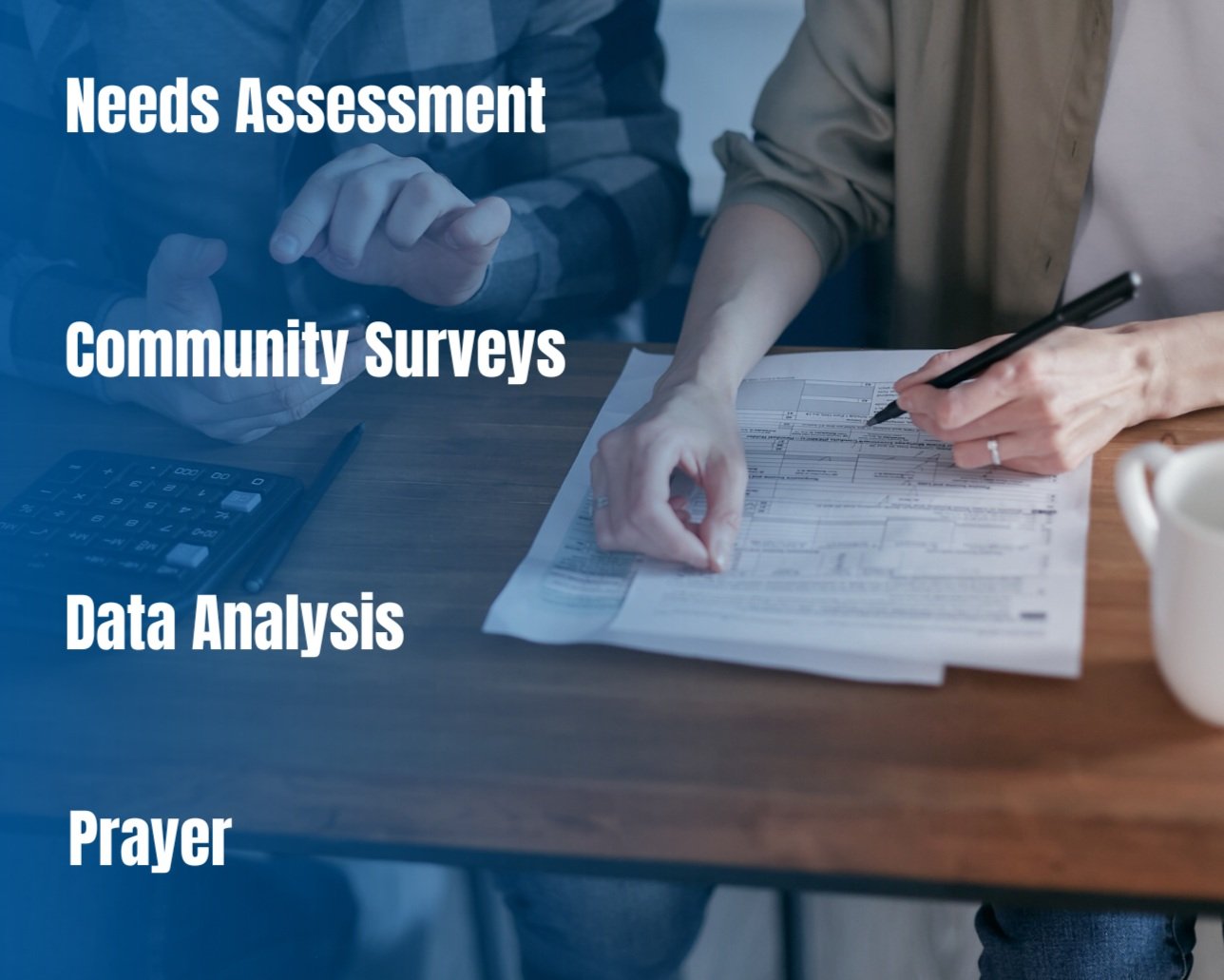Identifying Local Needs
“Not all good work is God work.” -CM
(from the 2024 Community Ministry In America Research Report)
Know Where and How to Search
Understanding the immediate and long-term needs of your community (and learning how to best address them) is essential to effective ministry. Accurately assessing those needs requires more than guesswork—it involves engaging with local resources, conducting community surveys, applying data analysis techniques and many more techniques to get a clear pulse of your community. Listed below are practical and actionable steps to help you identify local needs and position your church to serve where it's most impactful.
1. Observe the Community Through Intentional Walks
Sometimes the best insights come from simply being present in the neighborhoods you serve. Take regular walks through different parts of your community to observe signs of need or opportunity. Notice details like empty playgrounds, closed businesses, or increased requests for assistance. This kind of up-to-date intel helps you understand your community’s dynamics as they change.
2. Conduct Community Surveys for Direct Insights
Community surveys are an invaluable tool for identifying hidden or emerging needs. By asking residents about their concerns and challenges, you gather firsthand information that complements the data from social services and government sources. Community Ministers can discover unmet needs this way, like isolated seniors or transportation barriers. This tactic involves engaging directly with the community in conversations and focus groups. (Don’t forget to survey your congregation as well!)
Action Step: Design a 10-question survey this week and ask 3 or more community leaders to help distribute it.
3. Leverage Data Analysis to Spot Trends
Once you've gathered survey responses and collected insights from community partners, it's time to analyze the data. Look for recurring themes or patterns—such as increased requests for utility assistance or more single parents seeking support.
Practical Data Tools:
Create simple spreadsheets to track needs across neighborhoods.
Use free online tools like Google Forms or SurveyMonkey to visualize survey results.
Conduct an informal asset mapping session involving other church and community leaders to identify available resources that could address the needs you've uncovered.
4. Partner with Local Government & Social Services
Local government offices and social service agencies often have comprehensive data about the needs within a community. These agencies typically conduct SWOT analyses to evaluate community strengths, weaknesses, opportunities, and threats—these insights can help you align your ministry's efforts with existing needs. Try reaching out to your city’s planning department, school board, or local social services office to request reports on issues like food insecurity, housing shortages, or mental health services. You can also try attending public meetings or requesting access to recent community surveys to gather on-the-ground intel.
Action Step:
Schedule a meeting with a community leader or local government official this month. Ask them, "What trends are you noticing, and where can we help?"
5. Pray
As you begin your research, you will find the reality that needs arise just about everywhere. It could be overwhelming to attempt to meet every need in your community. The most important thing you can do as you prepare to engage your community on mission is to pray: often and with specific requests. Recruit a team of committed prayer warriors to join you in these specific prayers as together you seek God’s will for where and how your church will represent Jesus to the community around you.
As you pray and research, God may reveal your first step in meeting the physical and spiritual needs of your community. As He does so, remember that God has already gifted your people with the ability to do everything he wants them to do. Your goal is to connect your people with the opportunity and resources to respond to God’s prompting.
Action Step: Make a list of 5 church members you can rely on to pray with you, and reach out to them with your specific prayer requests.
Conclusion
Identifying your community’s needs is an ongoing process, but with consistent effort and strategic research methods, you'll gain the knowledge necessary to make a significant impact with your church’s efforts.
Through thoughtful needs assessments, community surveys, data analysis, and much prayer, your local ministry can provide targeted support where it matters most—ultimately connecting more people to the hope and love of Jesus.
Ready to learn more? Join our Community Minister Essentials Course for practical training and proven strategies.




